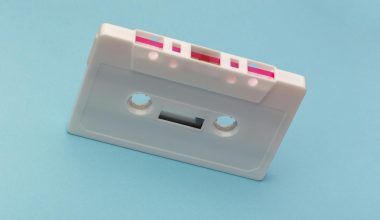Releasing a song is just the beginning of your journey as an artist. Once your track is live, getting it in front of the right audience becomes your main challenge. One of the most effective ways to gain visibility and grow your streams is by landing your song on curated playlists. These playlists have the power to amplify your reach and attract listeners who are genuinely interested in your music.
But how do you pitch your song to curated playlists after its release? It’s not just about sending a random email or DM—there’s an art to it. In this blog, we’ll explore actionable steps to help you successfully pitch your song and increase your chances of being featured.
Why Playlists Matter for Your Music Career
Playlists are the modern-day radio for independent artists. Platforms like Spotify, Apple Music, and YouTube Music have millions of users relying on playlists to discover new music. When your song gets placed on a popular playlist, it can:
- Boost your streams and royalties.
- Increase your exposure to new fans.
- Enhance your credibility in the music industry.
For these reasons, pitching your song to curated playlists should be a top priority after your release.
Step 1: Prepare Before You Pitch
Before reaching out to playlist curators, make sure you’ve laid the groundwork. Preparation is key to making a strong impression. Here’s what you need to do:
Optimize Your Music Metadata
Your song’s metadata includes the title, artist name, release date, and genre. Double-check that all this information is accurate and consistent across platforms. Incorrect metadata can confuse curators and lower your chances of placement.
Polish Your Online Presence
Curators often look you up before adding your song to their playlists. Ensure your social media profiles, artist website, and streaming profiles are updated and professional. Include:
- High-quality photos.
- A clear artist bio.
- Links to your music.
Build a Press Kit
A press kit is like a resume for your music. It should include:
- A brief artist bio.
- High-resolution images.
- Links to your music and social media.
- Press coverage, if available.
Having a press kit ready shows that you’re serious about your craft.
Step 2: Identify the Right Playlists
Not all playlists are created equal. Instead of pitching to every playlist you find, focus on those that align with your genre and audience. Here’s how to identify the right ones:
Research Playlists in Your Genre
Start by searching for playlists that feature music similar to yours. Use keywords related to your genre on platforms like Spotify or YouTube Music. Check who follows these playlists and ensure they match your target audience.
Check Playlist Size and Engagement
While large playlists with thousands of followers are appealing, smaller niche playlists can be just as impactful. Look for playlists with active listeners and consistent engagement—even if they have fewer followers.
Find the Curators
Many playlist curators are independent music enthusiasts or bloggers. Look for their contact information in the playlist description or on their social media profiles. You can also use tools like SubmitHub or PlaylistPush to connect with curators.
Step 3: Craft a Personal and Professional Pitch
The way you approach curators can make or break your chances of getting featured. Here are some tips to write an effective pitch:
Personalize Your Message
Avoid generic copy-paste emails. Address the curator by name and mention why your song fits their playlist. For example:
“Hi [Curator’s Name],
I’ve been a fan of your playlist [Playlist Name] for a while, especially the way it highlights fresh [genre] tracks. I believe my new song, [Song Name], would resonate well with your audience.”
Be Concise
Keep your pitch short and to the point. Include:
- A brief introduction about yourself.
- A link to your song.
- A line explaining why your track fits their playlist.
Attach Supporting Materials
Provide your press kit, social media links, and a high-quality image. This makes it easy for the curator to learn more about you without having to search.
Step 4: Leverage Your Network
Your network can play a significant role in getting your song noticed. Don’t hesitate to:
- Ask friends and fans to share your track.
- Collaborate with other artists who have a similar audience.
- Reach out to industry contacts for introductions to playlist curators.
Step 5: Use Playlist Submission Platforms
If finding curators feels overwhelming, playlist submission platforms can simplify the process. These tools connect you with playlist curators directly. Popular options include:
- SubmitHub: Allows you to pitch to bloggers, curators, and influencers.
- PlaylistPush: Helps you reach Spotify and Apple Music curators.
- Soundplate: A free tool to submit music to playlists.
While some platforms charge a fee, they can save you time and increase your chances of success.
Step 6: Follow Up and Build Relationships
After sending your pitch, give curators some time to respond. If you don’t hear back within two weeks, a polite follow-up email can be helpful. For example:
“Hi [Curator’s Name],
I hope this message finds you well. I wanted to follow up on my previous email about my song [Song Name]. I’d love to hear your thoughts and see if it’s a good fit for your playlist.”
Building a relationship with curators can open doors for future collaborations. Even if they don’t feature your current song, staying on their radar can be beneficial.
Step 7: Promote Your Playlist Features
When your song lands on a playlist, share the news with your audience! Post about it on social media, tag the curator, and encourage your fans to listen and share. The more engagement your song receives, the more likely it is to stay on the playlist.
Common Mistakes to Avoid
- Spamming Curators: Sending mass emails or DMs can damage your reputation. Always personalize your pitch.
- Ignoring Smaller Playlists: Niche playlists often have dedicated listeners who can become loyal fans.
- Skipping the Follow-Up: Polite persistence shows you’re serious about your music.
Conclusion
Pitching your song to curated playlist after release requires effort, but the rewards are worth it. By preparing thoroughly, targeting the right playlists, and crafting a compelling pitch, you can increase your chances of being featured. Remember, every placement—big or small—brings you closer to building a loyal fanbase and growing your career.
For further reading, explore these related articles:
For additional resources on music marketing and distribution, visit DMT Records Private Limited.






